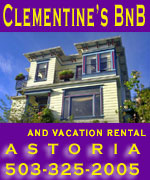Mole Crabs: Creepy Critters Coming Soon to Oregon Coast Beach Near You
Published 02/01/2017 at 6:29 AM PDT
Photos and Story by Tiffany Boothe, Seaside Aquarium
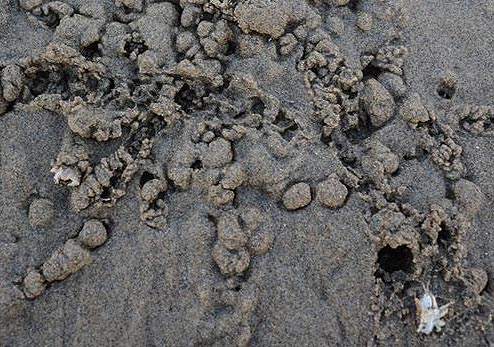
(Oregon Coast) - It's a beautiful day at the beach in, say, Cannon Beach, Newport, one of those cool hidden spots south of Yachats, Oceanside or maybe the mystical Neskowin. It could be anywhere. You're wading in the water, careful to watch the breakers for major sneaker waves, and you notice something odd continually washing past your feet. (All photos Tiffany Boothe, Seaside Aquarium).
What are those? Prehistoric little bugs? Miniature turtles? Sand flees? Potatoe bugs?
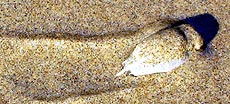 It's difficult to tell by the mere looks of them, but they're a type of crab. They’re mole crabs, to be exact.
It's difficult to tell by the mere looks of them, but they're a type of crab. They’re mole crabs, to be exact.
Don't worry. They don't pinch or bite. In fact, they have small feather-like appendages which they wave through the water to collect plankton. Instead of pinchers they have paddle-like legs which help them burrow quickly into the sand. Mole crabs swim and dig into the sand backwards - that way only their eyes are sticking out of the sand. You’ll see the waves appear to “bubble” as the vast numbers of these creatures are tossed around by the tide and they struggle to burrow themselves into one spot.
You will start to see them now and through the summer, coming up rather heavily in mid or late summer especially. Harmless but a little creepy to feel on your feet, they’re often sought after by fishermen as bait.
They bury themselves backwards in the sand so their breathing tubes can still remain sticking out. By burying themselves, they are protected from predators and they’re stationary long enough to feed.
Instead of pinchers, mole crabs have adapted claws to help them dig in the sand. They also come with two sets of antennae: breathing tubes and feeding antennae.
What’s in a name of a mole crab?
Their scientific name is Enerita analoga. The phylum is Arthropoda. Class: Crustacea. Order: Decopoda, and their family is Hippidae.
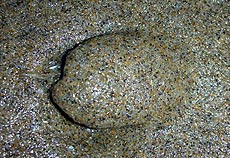 Mole crabs are related to many other crabs we know, but of course, they’re much smaller than most of the those in their little section of the animal kingdom. They’re in the same order as hermit crabs, true crabs and shrimp.
Mole crabs are related to many other crabs we know, but of course, they’re much smaller than most of the those in their little section of the animal kingdom. They’re in the same order as hermit crabs, true crabs and shrimp.
They normally live on sandy beaches in the surf zone, usually buried in the sand with the breathing antennae sticking out. You’ll find them in the geographic range of Alaska to Chile, but only occasionally found north of Oregon. Northern populations are from larvae that ride the current up the coast.
Now, what does it eat and how does it eat, you’re asking?
Why, plankton of course. These little critters use a second set of antennae to fish through the water. The hairs on the antennae are so fine they can catch bacteria. They don’t fish all of the time, usually only while lounging in the surf zone when the water is a few inches deep.
They ride in and out with the surf to maximize on feeding time. Primarily, they feed while buried in sand. They dig themselves into the surf and wait for the receding wave. Their antennae then catch any phytoplankton coming through, and their appendages then take the catch into their teeny, tiny mouths.
Their shells – or carapaces – get about one inch to 1.4 inches in length.
Their lifespan is about 18 months maximum, usually summer through to the next summer.
Mole crabs reproduce through internal fertilization. The female must molt before reproduction can occur (this is the case with most crabs).
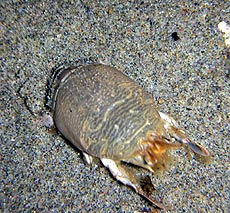 The female carries her eggs under the abdominal area for several months. The eggs are bright orange, and mating season is the spring.
The female carries her eggs under the abdominal area for several months. The eggs are bright orange, and mating season is the spring.
By July, most of the males that were hatched the previous summer have died off. The females will have died off by the winter, leaving only one single generation of them on the beach. Once the winter kicks in and the sand gets too cold, they leave the beach for deeper waters.
These are popular little guys - a huge link in the food chain. Seagulls, sandpipers and surf perch make steady meals out of them. They are popular with many people on the east coast as bait for fishing.
To see live mole crabs, head to the Seaside Aquarium. 503-738-6211. Oregon Coast Hotels for this - Where to eat - Maps - Virtual Tours
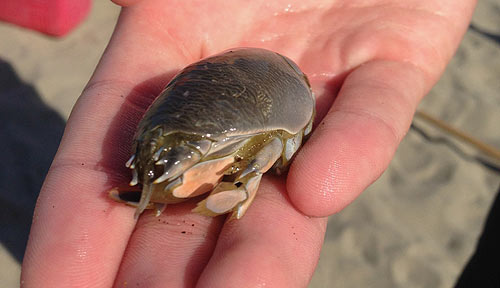
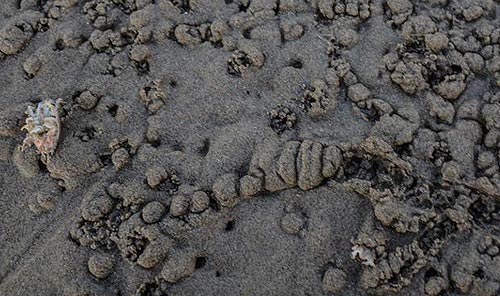
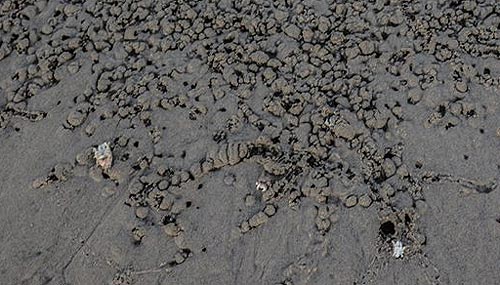
More About Oregon Coast hotels, lodging.....
More About Oregon Coast Restaurants, Dining.....
LATEST Related Oregon Coast Articles
The man fell into the infamously dangerous watery hole and died. Safety, weather
When an Oregon Coast Beach Blob Revealed a Couple of Odd Scientific Twists
What first seemed to be an extra large mutant jellyfish turned out something else. Marine sciences
Artists from Oregon and Beyond Asked to Submit Workshop Proposals for Coastal...
Deadline Oct. 29 for the 29th annual Newport Paper and Book Arts Festival, April 23?25, 2026. Newport events
Gold Beach, South Oregon Coast Weather: Forecasts, Live Radar, Alerts, Tides,...
Gold Beach, Oregon Weather: Forecasts, Live Radar, Alerts, Tides, Current Conditions, Winds
N. Oregon Coast Crews Ask for Help: Volunteers Needed for Oceanside Stairway Fix
At Short Beach: September 17, 18, 25, 26, 27, 30 and October 1. Oceanside events, Pacific City events, Tillamook events
N. Oregon Coast Birding and Beach Cleanup are Highlights at Oceanside Events
Sept 20: Birds Walk and Talk. Sept 27 Netarts-Oceanside cleanup. Oceanside events, Pacific City events, Tillamook events
Those Mysterious Shafts of Sunlight Beaming Out from Oregon Coast Skies
A curious weather phenomenon that happens more out here
Curb, Road Construction Resumes in Lincoln City as Oregon Coast Season Begins...
Crews return Sept 15 with some dust and small delays. Traffi
Back to Oregon Coast
Contact Advertise on BeachConnection.net
All Content, unless otherwise attributed, copyright BeachConnection.net Unauthorized use or publication is not permitted







